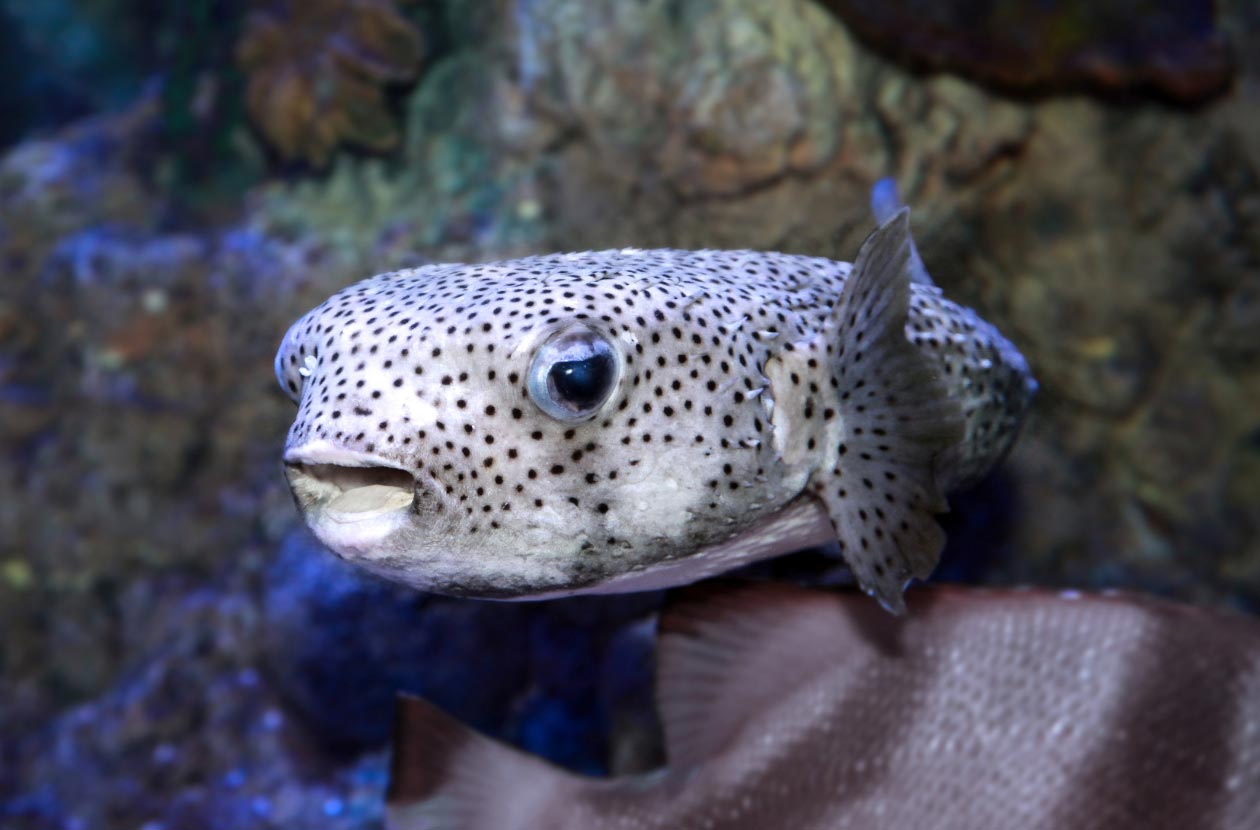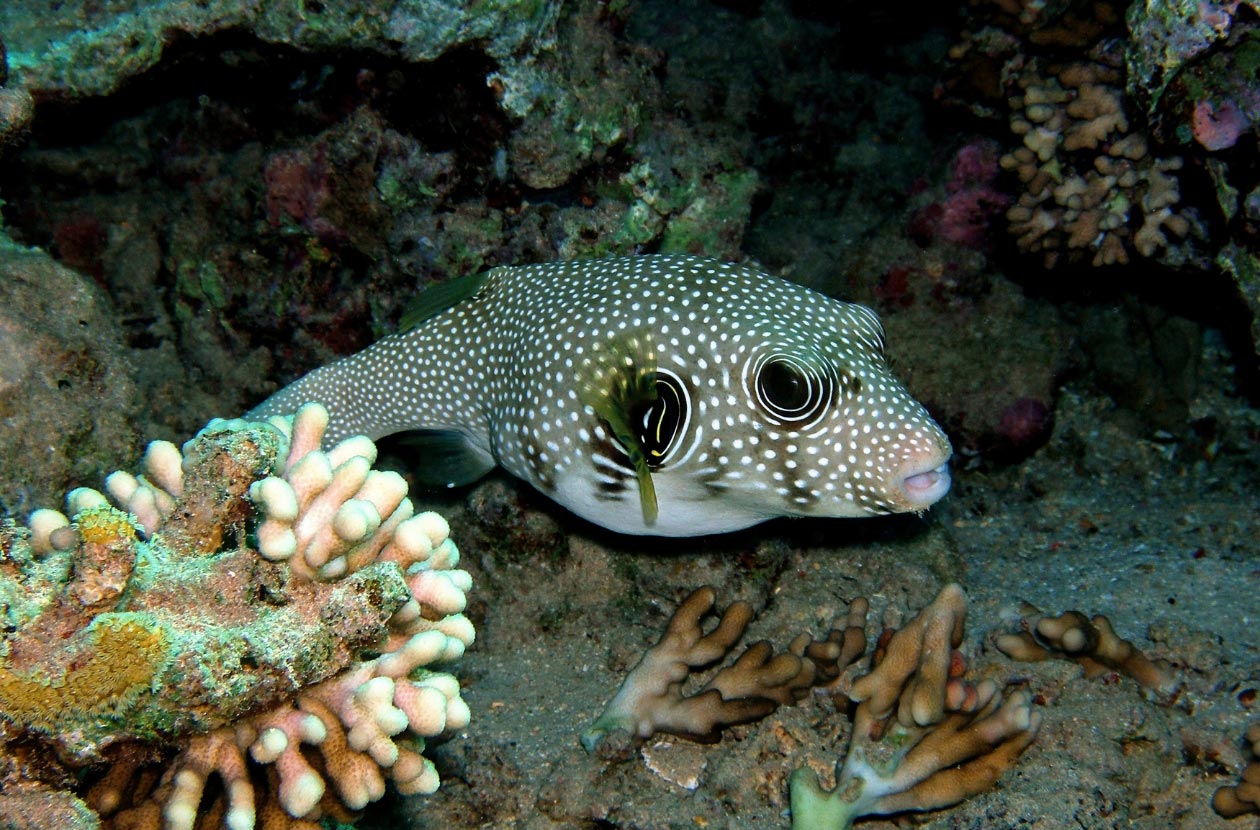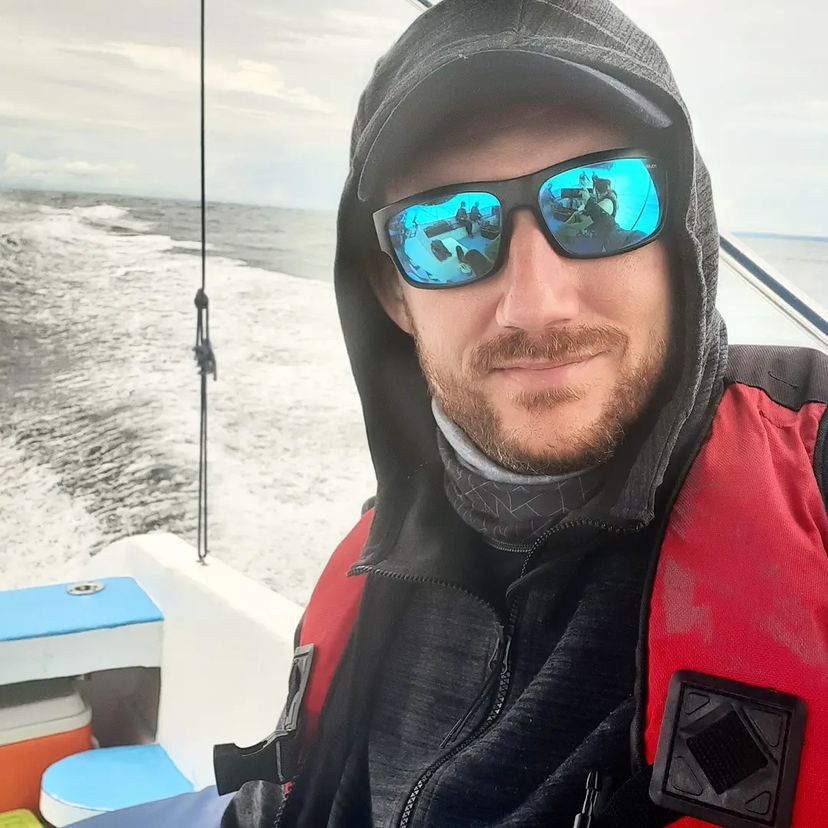Pufferfish, also known as blowfish or fugu, are fascinating creatures that inhabit the world’s oceans. These unique fish are renowned for their ability to inflate themselves into round, spiky balloons when threatened. While they may appear cute and harmless, this fish actually possess a deadly secret. In this article, we will delve into the captivating world of pufferfish, exploring their characteristics, habitats, behavior, and the dangers they pose. So, let’s dive in!
Table of Contents
Pufferfish: An Introduction
Pufferfish belong to the family Tetraodontidae and are characterized by their unique ability to inflate their bodies with water or air when threatened. This inflation causes their bodies to expand and become covered in sharp spines, creating an imposing defense mechanism against potential predators.
What is its life expectancy? Pufferfish typically have a lifespan of 5 to 10 years in the wild, depending on the species and environmental factors.
Are all pufferfish toxic? Yes, all species are toxic to some degree. However, the levels of toxicity vary between species.
Are there any known predators? Sharks and large predatory fish, such as groupers. However, they must be cautious when dealing with an inflated one.
What are some interesting facts about them? They have the ability to change color to blend in with their surroundings, and some species even create intricate sand designs on the seafloor as a form of courtship display. Additionally, they have an excellent sense of smell, which helps them locate food in their environment.

Physical Features and Adaptations
Pufferfish come in a variety of sizes, ranging from a few centimeters to nearly a meter in length. They have elongated bodies that are laterally compressed, making them excellent swimmers. Their skin is thick and covered in small, tooth-like spines, providing them with an effective defense against predators.
Habitat and Distribution
Pufferfish can be found in both saltwater and freshwater environments around the world. They prefer tropical and subtropical waters, where they inhabit coral reefs, seagrass beds, and estuaries. Pufferfish are especially abundant in the waters of the Indo-Pacific region.
Diet and Feeding Habits
Pufferfish have a carnivorous diet, feeding primarily on small invertebrates such as crustaceans, mollusks, and worms. Some larger species of puffers also feed on small fish. They have strong beak-like jaws that allow them to crush the shells and exoskeletons of their prey.
Inflating Mechanism: The Art of Self-Defense
When threatened, pufferfish have the incredible ability to inflate their bodies by rapidly gulping water or air. This inflation not only makes them appear larger and more intimidating to predators but also exposes their sharp spines, making it difficult for predators to swallow them. Some species can inflate to more than twice their original size.

Toxins: The Deadly Defense
While pufferfish may seem harmless, they are actually one of the most poisonous creatures in the world. Their internal organs, skin, and even their eggs contain a potent neurotoxin called tetrodotoxin. This toxin is lethal to most predators, including humans. Consumption of improperly prepared pufferfish can result in paralysis, organ failure, and even death.
Conservation Efforts
Due to overfishing, habitat destruction, and pollution, many species of pufferfish are facing population declines. Conservation organizations and governments are working together to protect their habitats, regulate fishing practices, and raise awareness about the importance of preserving these unique creatures.
Human Interaction and Culinary Intrigue
Despite the risks associated with consuming pufferfish, they are considered a delicacy in some parts of the world, particularly in Japan. Specially trained chefs meticulously remove the toxic organs to create fugu dishes, which are highly sought after by adventurous food enthusiasts. However, strict regulations are in place to ensure the safety of consumers.
Pufferfish in Popular Culture
Pufferfish have made their way into popular culture through various mediums. They are often depicted in cartoons, movies, and video games, where their ability to inflate is portrayed for comedic effect. Their distinctive appearance and intriguing behaviors have captured the imagination of both children and adults alike.

The Intriguing World of Pufferfish Art
This fish have also inspired artists around the world. Their intricate patterns, vibrant colors, and unique shape make them popular subjects for paintings, sculptures, and other art forms. Pufferfish art not only showcases their beauty but also raises awareness about the need for their conservation.
Pufferfish – let’s recap
In conclusion, pufferfish are truly remarkable creatures with fascinating adaptations and behaviors. Their ability to inflate themselves and the deadly toxins they possess make them both intriguing and dangerous. While this fish should be admired from a distance in their natural habitats, they serve as a reminder of the incredible diversity and wonders found beneath the ocean’s surface. And the best way to see them from close up is, of course, scuba diving in tropical and warm water!






